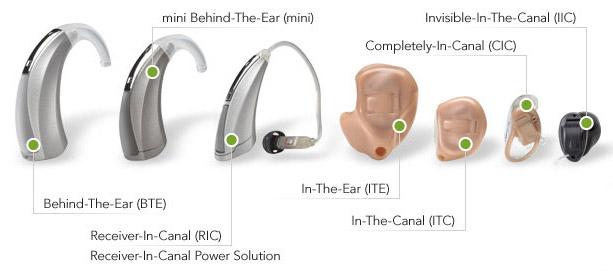What are the Different Types of Hearing Aids and How They Work?

You must talk to a hearing aid specialist to figure out which is the best hearing device for you, as well as the features required for you. The right devices for you depend upon the following factors:
Your current hearing device
Your lifestyle
Your age
Your budget
How you’ll manage small devices
Following are the two main types of hearing aids:
Analog hearing aids
Digital hearing aids
1. Analog hearing aids
Analog hearing aids work as a converter. They convert sound waves into electrical signals then make them loud enough to let us hear them. They’re less expensive and have some basic and simple features like volume controller.
2. Digital hearing aids
Digital hearing aids convert sound waves into numerical codes just like the computer codes, then amplify them and deliver them to us. These codes include the information on the direction of the sound and it’s the pitch. This makes ot easier for you to adjust the sound as per your needs, whether you’re sitting in a meeting, restaurant or a toilet. The latest nano hearing technologies allow the devices to adjust automatically as per the surroundings of the user.
Read Also: A Review About Starkey Hearing Aids
There are three main types of modern hearing aids. They’re different in size, placement, and they're working style.
1. Canal Hearing Aids
Canal hearing aids fit inside your hear and pretty invisible to see. An in-the-canal fits directly into your ear canal. A completely-in-canal (CIC) also known as nano hearing aids is smaller and nearly hidden in your ear.
Either type can help mild and help with severe hearing loss. But, because of their sizes, the very adjustment and removal process might difficult for some people. This type of hearing isn’t the best deal for children and adults who have problems with small devices. An invisible-in-canal (IIC) hearing aid is quite hard to see. You have to put in and out every single day.
2. In-the-Ear (ITE)
This type of hearing aid fits completely inside your outer ear. It has a hard plastic case that holds the electronics. It’s the best hearing aids for those people with mild to severe hearing loss problems, but they don’t work well for children.
3. Behind-the-Ear (BTE)
These hearing aids are designed to stay behind your ear as known by their name. These hearing aids sit in a plastic case behind your ear and directs sound to your ear. There’s a different type called a Mini BTE, that stays fully behind your ear with a narrow tube that goes through your ear canal and connects to your ear. This helps keep earwax building up and make sure your voice sounds properly. They can work for mild to severe hearing loss, but not for everyone.
4. Receiver-in-Canal (RIC)
Receiver-in-canal (RIC) type of hearing aids has a behind-the-ear component that connects to a receiver in the ear or ear canal with a tiny wire. These components allow low-frequency sounds to enter the ear naturally and high-frequency sounds to be amplified through the hearing aid. This type of hearing aid is a good choice for people with mild to profound hearing loss.
Don’t hesitate to ask if the hearing device you choose has any special features you want. Not all hearing devices have the same features.
Directional microphones assist you to respond better to sound coming from a specific direction and eliminate the background noise.
Turning off your TV is better at picking sounds to form the phone
This system can help you in theaters, events, and churches
Direct audio input allows you to plug in an FM listening system or a remote microphone. You can also connect directly to a TV or any other device you want.
There are many other different types of hearing aids for specific types of od hearing loss. For instance, there’s a hearing aid that uses a bone vibrator for those people who don’t have an ear canal or outer ear.
Adjusting to Hearing Aids
Remember, using hearing aids won’t give you the same quality hearing what it used to be. Ut, if you use it properly and in a manageable way, you’ll become more aware of sounds and from which direction they're coming from.
When you first get your hearing aids to be patient. It might take some time to use them properly. In most states, you’re allowed to a trial period after you buy a hearing aid. In this case, if you're hearing aid won’t work you can ask for a partial refund of a new one as per your requirements. And don’t forget about your warranty coverage.
Take your time to learn how you hearing aid work. Work closely with your audiologist to avoid problems such as:
Discomforts
Disturbing Background noise
Buzzing while using a cell phone
Feedback or a whistling sound
Echo-like sounds from your voice
It might help you to start using your hearing aids in quiet areas and to keep a diary about how you feel while using your hearing aids.

